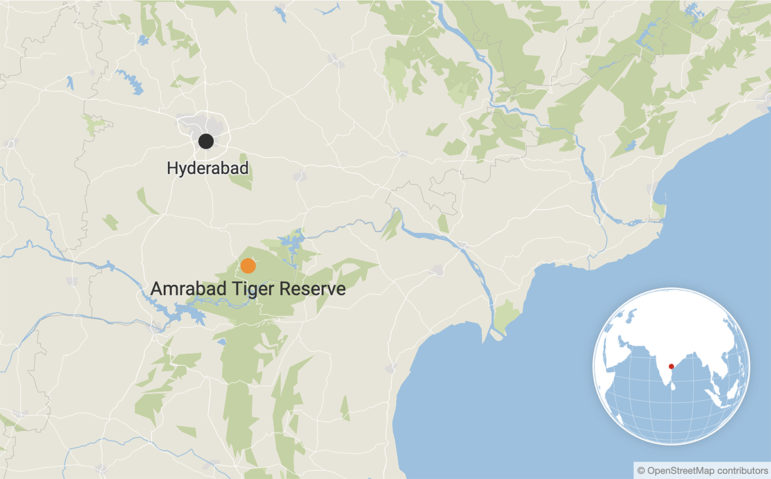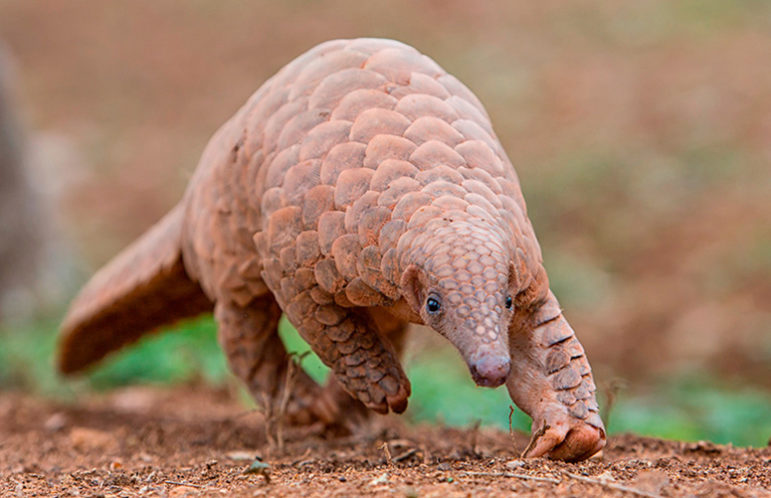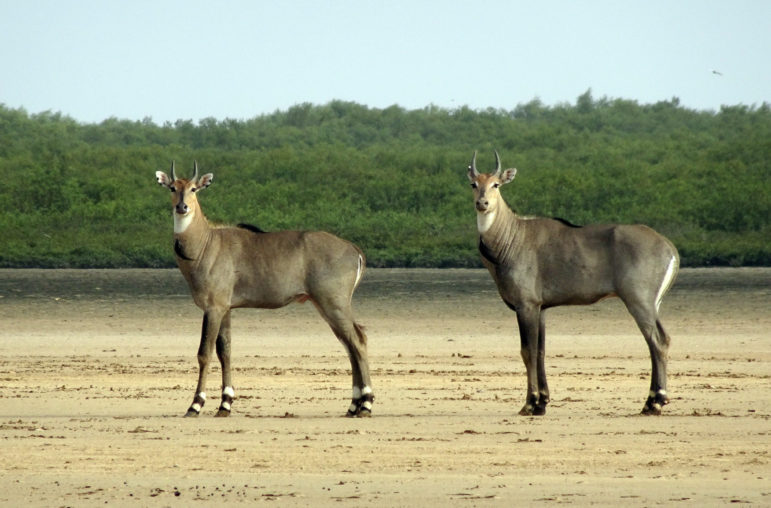Bengal tiger. Image by Max Pixel (Public domain).
In May 2019, an expert panel on forests of India’s environment ministry approved the survey and exploration of uranium in Telangana’s Amrabad Tiger Reserve.

Telangana’s Amrabad tiger reserve is one of the largest tiger reserves in India. Map made with Datawrapper.
A few months later, Mongabay India published a story on the government’s plan to start mining uranium in the tiger reserve.
The article highlighted several key facts essential in providing transparent, evidence-based facts to empower stakeholders’ decision-making for the proposed uranium mining project:
- India is home to about 60% of the world’s tiger population. Tiger reserves, which cover about 2% of the country, are increasingly under threat from development projects.
- The Amrabad Tiger Reserve is one of the largest in India and is home to an estimated 13 tigers.
- The approval to mine uranium ignored the potential threat to the ecosystem and disturbance of the native wildlife.
- Most of the local forest officials in their site inspection reports recommended against it stating that it would adversely affect the flora and fauna.
- Their reports noted “the presence of a range of endangered animals like panther, sloth bear, wild dog, jungle cats, wolf, pangolin, Bonnet macaque, pythons, cobra, wild pig, nilgai, spotted deer, and sambar at the reserve.”
- The field director of the Amrabad Tiger Reserve refused to recommend the project, noting that the area proposed for survey and exploration of uranium fall in the Amrabad Tiger Reserve.

Indian pangolin. Image by Ajit Huilgol via Wikimedia Commons (CC 2.0).
Impact
This initial coverage triggered a series of ongoing stories by local media, pressure from the public, conservationists, and non-governmental organizations. The project was even rejected by the Telangana State.
In March 2021, Mongabay was informed that India’s Atomic Minerals Directorate cancelled the uranium mining project due to continuing protests against it.
What started as an article published by Mongabay, became the first step in informing the public to prevent a mining operation that could have been catastrophic for wildlife and people. This is just one example of how Mongabay’s independent reporting has real-world impacts that influence decision-making in the environmental world.

Nilgai, the largest Asian antelope in Asia. Photo by Pixabay (public domain).
Support independent environmental journalism
If you are interested in helping shed light on conservation stories such as this one, there are two excellent ways you can do so with Mongabay. First, consider making a donation, which directly helps us continue to produce high impact journalism from nature’s frontline. Second, subscribe to Mongabay’s newsletter to get the latest environmental news delivered right to your inbox.
About Mongabay
Mongabay is a nonprofit environmental science and conservation news platform focused on providing cutting-edge independent journalism from nature’s frontline. We pride ourselves in producing reporting that has substantial, tangible impacts around the world.